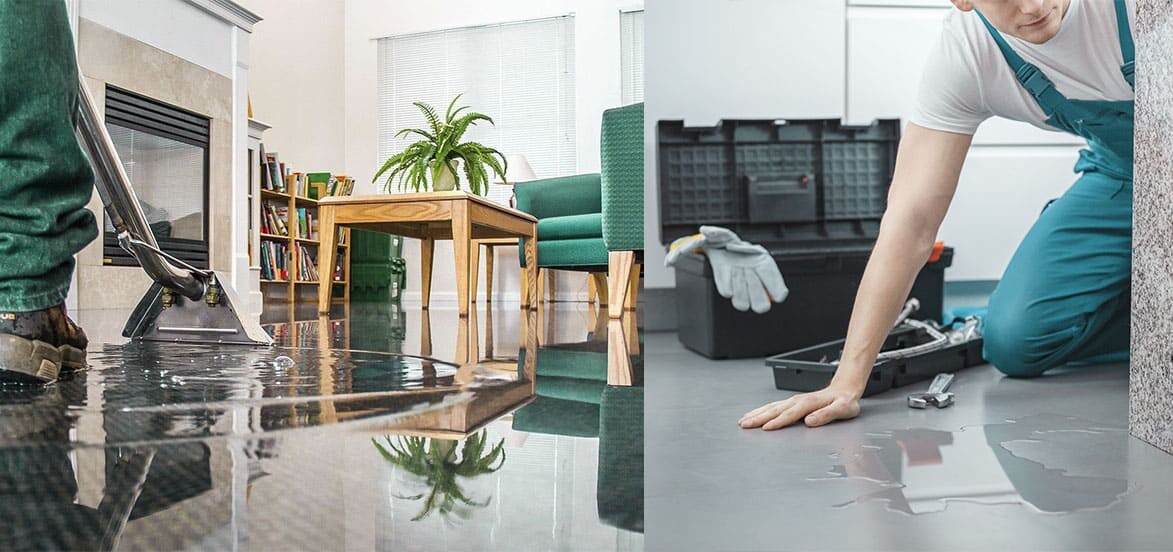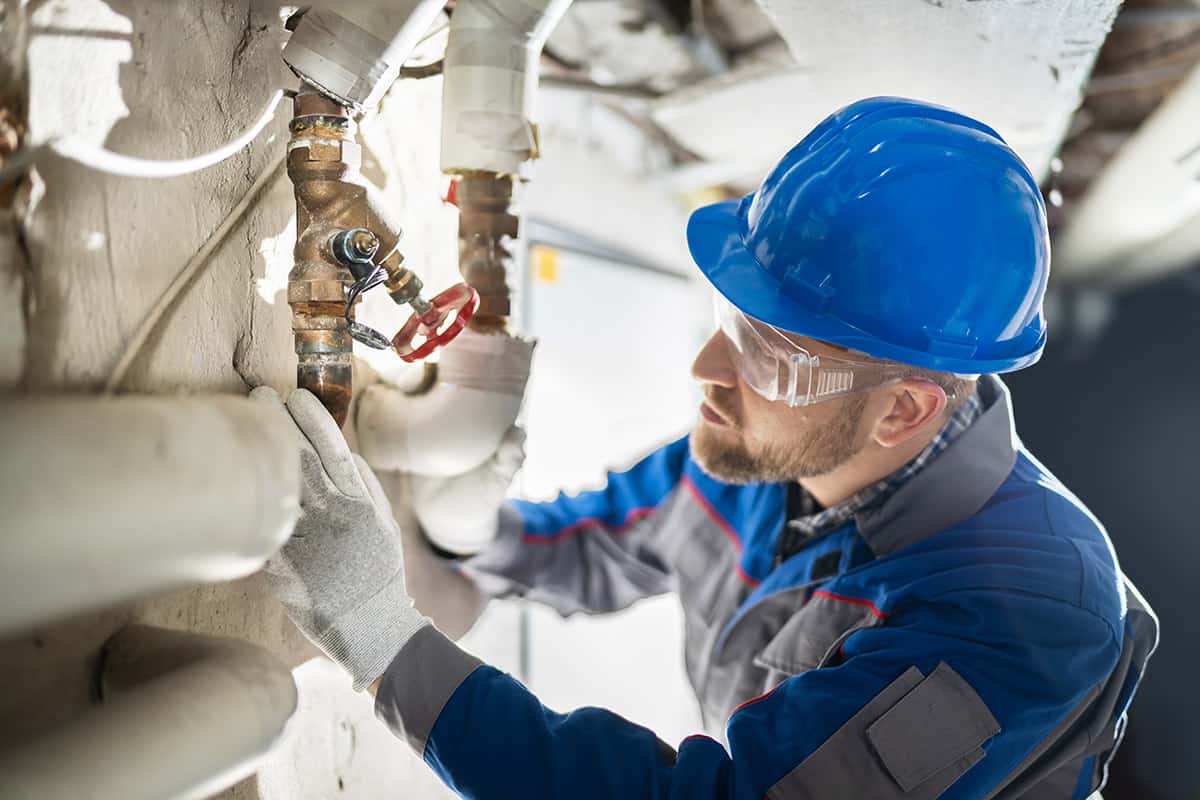Key questions before hiring a Water Damage Restoration company
Wiki Article
Water Damage Restoration 101: Comprehending the Process and Price
Water damage can strike unexpectedly, leaving homeowners in a state of complication. Understanding the repair procedure is essential for effective recuperation. From assessing the damage to choosing the ideal company, each action impacts the general end result and expense. Factors such as the kind of water damage and necessity likewise play a substantial function. What are the specific techniques made use of in reconstruction, and just how can one get ready for prospective expenses?Types of Water Damage

Preliminary Assessment and Examination

Water Removal Strategies
Following the initial evaluation, effective water removal techniques are used to alleviate damage and avoid further problems. These techniques entail the usage of specialized equipment such as industrial-grade vacuum cleaners and submersible pumps - Water Extraction And Drying. The option of method depends upon the quantity of water present and the kind of materials affected. For standing water, submersible pumps are commonly utilized for fast removal, while vacuum cleaners are suitable for drawing out water from carpets and furniture. Furthermore, progressed techniques like water extraction floor coverings may be used for hard-to-reach areas - Water Damage Restoration. The goal is to get rid of as much water as feasible, lessening the potential for mold and mildew development and structural damage. Trigger and effective water removal is vital in the overall water damage repair processDrying Out and Dehumidification Process
Once the water removal is complete, the drying out and dehumidification procedure comes to be crucial to restoring the affected area. This phase normally uses industrial-grade dehumidifiers and air moving companies to successfully lower dampness degrees. The dehumidifiers pull in wet air, getting rid of excess moisture, while air moving companies circulate air to accelerate dissipation. Monitoring tools is often made use of to track humidity and temperature level levels, making certain optimal drying out problems. The duration of this process can differ relying on the extent of the water damage and environmental aspects. It is essential to extensively completely dry all influenced products, consisting of wall surfaces, floor covering, and home furnishings, to avoid mold development and structural damage. Correct implementation of this action is vital for an effective reconstruction outcome.Cleaning Up and Sterilizing Afflicted Locations
A detailed first assessment and examination of influenced areas is essential to recognize contamination degrees when the drying process is complete. Water Damage Restoration. Reliable cleaning methods and ideal items need to then be utilized to remove debris and spots. Sanitization and sanitation techniques are necessary to ensure that hazardous pathogens are removed, bring back the space to a secure problem.Preliminary Assessment and Inspection
Before starting any restoration initiatives, a thorough first evaluation and evaluation of the impacted areas are vital for efficient cleaning and disinfecting. This process entails determining the level of water damage, determining the source of the water breach, and reviewing the products impacted. Examiners usually seek indicators of mold growth, structural integrity issues, and damaged personal belongings. The analysis also consists of examining moisture degrees utilizing customized equipment to guarantee no covert water pockets stay, as these can result in more complications. Recording the findings is crucial for planning the next actions in the remediation process. An in-depth preliminary analysis allows remediation experts to create a targeted technique for reliable cleansing and disinfecting, inevitably minimizing damage and wellness threats.Cleaning Techniques and Products
Reliable cleaning and sterilizing of water-damaged locations need a selection of strategies and items customized to the specific materials affected. For porous surfaces like drywall and carpeting, extraction techniques are necessary to remove excess dampness, adhered to by deep cleaning with specialized detergents. Non-porous materials such as floor tile or steel can be cleaned up using commercial-grade cleaners that efficiently remove pollutants. Heavy steam cleaning is another effective technique, particularly for rugs and upholstery, as it utilizes heats to eliminate microorganisms and mold and mildew (Flood Cleanup Services). In addition, eco-friendly products are increasingly preferred for their safety and security and efficiency - Water Damage Restoration. Inevitably, picking the ideal cleansing approaches and products not just guarantees prompt tidiness however also help in avoiding further damage and carcinogen connected with water invasionSanitization and Disinfection Approaches
When resolving water damage, appropriate sanitization and disinfection techniques are necessary to guarantee the security and health of the afflicted setting. After initial cleaning, surface areas have to be treated with appropriate anti-bacterials to get rid of virus, mold, and microorganisms that grow in moist conditions. Typical approaches consist of the usage of EPA-approved chemical anti-bacterials, which can be used with splashing or wiping strategies. Furthermore, ultraviolet (UV) light systems can effectively sterilize areas by counteracting microorganisms without extreme chemicals. The option of approach typically relies on the sort of products influenced and the extent of contamination. Inevitably, extensive sanitization not only restores a secure space however additionally helps protect against future health dangers connected with remaining dampness and mold growth.
Repairs and Restoration Options
Reviewing the damage brought on by water direct exposure is vital for identifying the ideal repair work and repair alternatives. Homeowners may face various concerns, including damaged drywall, warped floor covering, and endangered structural aspects. Depending upon the level of the damage, repair work may entail this website changing areas of drywall, setting up brand-new floor covering, or enhancing architectural beam of lights. In situations of severe damage, full replacement of affected products could be essential. In addition, expert conservators typically suggest making use of moisture meters to evaluate concealed moisture levels prior to picking the finest strategy. It is essential to act promptly to avoid mold development and additional deterioration. Picking the ideal alternatives not just restores the residential property however likewise guarantees lasting security and performance.Factors Affecting Restoration Prices

The degree of water damage straight influences the restoration sets you back homeowners can anticipate to incur. Aspects such as the source of the water, the period of exposure, and the affected products significantly influence rates. Tidy water damage from a broken pipe is typically much less expensive to restore contrasted to damage created by sewage. Furthermore, the degree of contamination determines the need for specialized cleaning and disposal solutions, further boosting expenses. Geographic place additionally plays a role, as regional labor rates and schedule of remediation solutions can differ. The necessity of the feedback influences expenses; quicker interventions usually lead to lower overall expenditures by preventing more damage. Comprehending these elements is important for property owners when estimating repair costs.
The 3 key kinds of water damage are classified based on contamination levels: tidy water, gray water, and black water. A detailed initial analysis and assessment are important steps in the water damage remediation procedure. For standing water, completely submersible pumps are generally made use of for quick elimination, while vacuum cleaners are suitable for drawing out water from rugs and upholstery. The extent of water damage straight influences the repair costs house owners can anticipate to sustain. Clean water damage from a damaged pipe is usually less costly to recover compared to damage triggered by sewer.
Report this wiki page